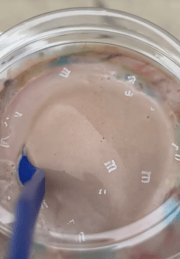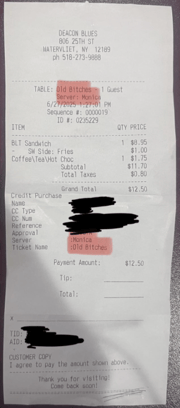7 hidden home hazards you shouldn’t ignore
By
Veronica E.
- Replies 0
Home is where we feel safest, but it can also harbor risks we don’t always see.
Mold, pests, old wiring, and outdated materials may quietly threaten your health over time.
These hidden hazards often worsen with age and wear—especially in older homes.
And for seniors spending more time at home, staying ahead of these risks becomes even more important.
Here are seven key dangers to watch for and simple steps you can take to keep your home safe and comfortable.
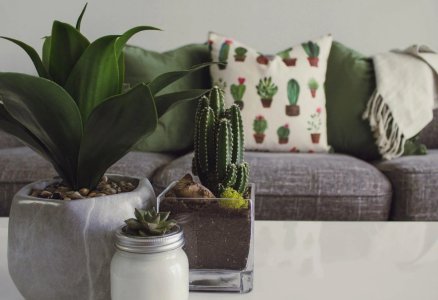
Mold thrives in dark, damp spaces—under sinks, behind drywall, inside HVAC units, and even under old carpets.
You might not see it, but symptoms like fatigue, coughing, brain fog, and headaches could be linked to hidden mold.
Small areas can sometimes be cleaned thoroughly, but larger or hidden mold problems often require professional remediation.
And if you rent, your landlord is typically responsible for addressing mold issues—don’t hesitate to speak up.
Seeing a few ants may not seem serious, but consistent signs of rodents, cockroaches, or bedbugs can pose real health risks.
These pests can spread disease, trigger allergies, and contaminate food and surfaces.
DIY traps may help short-term, but persistent infestations should be handled by licensed pest control experts to prevent further issues.
Even a small crack in a window can let in moisture, pests, and chilly drafts—plus it reduces your home’s energy efficiency and security.
Broken seals around window panes can also cause condensation or mold.
It’s worth repairing or replacing damaged windows before they cause more expensive problems.
And if you rent, window repairs are usually your landlord’s responsibility.
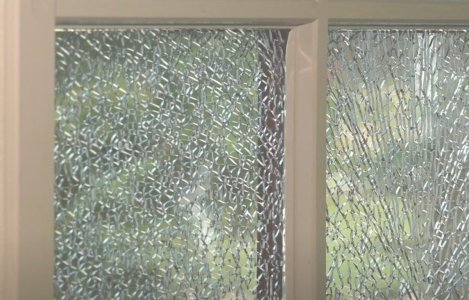
Homes built before 1978 often contain lead-based paint.
When it chips or peels, it releases dust that’s especially harmful to children—but adults can be affected too, with risks including high blood pressure and cognitive changes.
If your home falls into that age bracket, get it tested by a certified lead professional.
Never attempt to sand or repaint over suspected lead paint without proper precautions.
Asbestos was widely used in insulation, ceiling tiles, and floor materials until the 1980s.
When disturbed, its tiny fibers can become airborne and lead to serious lung conditions like mesothelioma.
If you plan to remodel or repair parts of your home, it’s crucial to check for asbestos first.
Do not try to remove it yourself—licensed professionals are trained to handle it safely.
Old carpets may look fine on the surface but often trap allergens, dust mites, and even mold deep in the fibers—especially if they haven’t been deep cleaned or replaced in years.
This can worsen allergies, asthma, and skin conditions like eczema.
If replacing isn’t an option, a professional carpet cleaning can still significantly reduce indoor allergens.
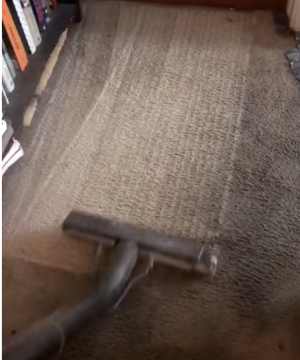
Many older homes have ungrounded outlets—meaning they lack the third “ground” hole that helps prevent electrical shocks.
This is particularly risky in areas with water, like kitchens and bathrooms.
You can purchase a simple outlet tester to check if yours are grounded.
Replacing outdated outlets with grounded ones, or installing GFCI outlets, can make your home much safer.
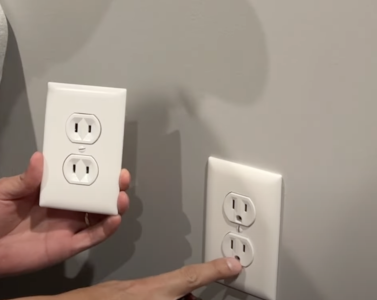
Beyond the seven main hazards, don’t overlook things like:
Preventing accidents doesn’t require a full renovation—just regular maintenance and awareness.
Keeping your home safe doesn’t have to be overwhelming—small changes can make a big difference.
By staying alert to hidden hazards and addressing issues early, you’re protecting both your health and your peace of mind.
After all, a safe home is one that lets you truly relax and enjoy every moment in it.
Read next: Kitchen killers? What these 10 kitchen items are doing to your health and safety!

Have you ever uncovered a hidden home hazard? What changes have you made to make your home safer? Share your stories and tips in the comments—we’d love to hear what’s worked for you.
Mold, pests, old wiring, and outdated materials may quietly threaten your health over time.
These hidden hazards often worsen with age and wear—especially in older homes.
And for seniors spending more time at home, staying ahead of these risks becomes even more important.
Here are seven key dangers to watch for and simple steps you can take to keep your home safe and comfortable.

A cozy living room can hide unexpected dangers like mold, dust, or outdated wiring—regular checks help keep your space safe and healthy. Image Source: Pexels / Designecologist.
1. Mold: the hidden intruder
Mold thrives in dark, damp spaces—under sinks, behind drywall, inside HVAC units, and even under old carpets.
You might not see it, but symptoms like fatigue, coughing, brain fog, and headaches could be linked to hidden mold.
Small areas can sometimes be cleaned thoroughly, but larger or hidden mold problems often require professional remediation.
And if you rent, your landlord is typically responsible for addressing mold issues—don’t hesitate to speak up.
Also read: One of your kitchen appliances could be a fire hazard. Half a million units recalled—check YOURS now!
2. Pest infestations: not just a nuisance
Seeing a few ants may not seem serious, but consistent signs of rodents, cockroaches, or bedbugs can pose real health risks.
These pests can spread disease, trigger allergies, and contaminate food and surfaces.
DIY traps may help short-term, but persistent infestations should be handled by licensed pest control experts to prevent further issues.
Also read: This life-saving trick could save you when your brakes fail
3. Cracked or broken windows
Even a small crack in a window can let in moisture, pests, and chilly drafts—plus it reduces your home’s energy efficiency and security.
Broken seals around window panes can also cause condensation or mold.
It’s worth repairing or replacing damaged windows before they cause more expensive problems.
And if you rent, window repairs are usually your landlord’s responsibility.

Even a small crack in a window can lead to bigger problems—letting in moisture, pests, and drafts that compromise your home’s safety and comfort. Image Source: YouTube / First Coast News.
4. Lead paint in older homes
Homes built before 1978 often contain lead-based paint.
When it chips or peels, it releases dust that’s especially harmful to children—but adults can be affected too, with risks including high blood pressure and cognitive changes.
If your home falls into that age bracket, get it tested by a certified lead professional.
Never attempt to sand or repaint over suspected lead paint without proper precautions.
Also read: A scalding situation—Thousands of machines pulled for safety concerns
5. Asbestos: a silent threat
Asbestos was widely used in insulation, ceiling tiles, and floor materials until the 1980s.
When disturbed, its tiny fibers can become airborne and lead to serious lung conditions like mesothelioma.
If you plan to remodel or repair parts of your home, it’s crucial to check for asbestos first.
Do not try to remove it yourself—licensed professionals are trained to handle it safely.
6. Worn-out carpet
Old carpets may look fine on the surface but often trap allergens, dust mites, and even mold deep in the fibers—especially if they haven’t been deep cleaned or replaced in years.
This can worsen allergies, asthma, and skin conditions like eczema.
If replacing isn’t an option, a professional carpet cleaning can still significantly reduce indoor allergens.

Old, worn-out carpets can trap dust, allergens, and mold—posing hidden health risks, especially for those with asthma or allergies. Image Source: YouTube / @julingtoncreekcarpetcare8378.
7. Ungrounded electrical outlets
Many older homes have ungrounded outlets—meaning they lack the third “ground” hole that helps prevent electrical shocks.
This is particularly risky in areas with water, like kitchens and bathrooms.
You can purchase a simple outlet tester to check if yours are grounded.
Replacing outdated outlets with grounded ones, or installing GFCI outlets, can make your home much safer.

Outdated or ungrounded electrical outlets can increase the risk of shocks and appliance damage—especially in areas near water like kitchens and bathrooms. Image Source: YouTube / Home Rapid Repair.
Also read: Are these 7 spots in your home quietly increasing your fire risk?
A few more risks worth checking
Beyond the seven main hazards, don’t overlook things like:
- Loose handrails or stairs
- Cluttered walkways
- Slippery rugs
- Carbon monoxide or gas leaks
- Non-working smoke detectors
Preventing accidents doesn’t require a full renovation—just regular maintenance and awareness.
Also read: Neurologist warns this common household item could be a winter hazard–here's what you need to know!
What you can do today
- Take a slow walk through your home and inspect areas where mold, pests, or leaks might appear.
- Test smoke and carbon monoxide detectors monthly.
- Schedule a deep cleaning of carpets and rugs.
- Check the age of your paint and insulation if your home is older.
- Hire a professional to inspect wiring and outlets if they seem outdated.
Keeping your home safe doesn’t have to be overwhelming—small changes can make a big difference.
By staying alert to hidden hazards and addressing issues early, you’re protecting both your health and your peace of mind.
After all, a safe home is one that lets you truly relax and enjoy every moment in it.
Read next: Kitchen killers? What these 10 kitchen items are doing to your health and safety!
Key Takeaways
- Mold often hides in damp, dark areas and can cause serious health issues—especially in older adults.
- Pests like mice, cockroaches, or bedbugs carry disease and require professional removal if infestations persist.
- Hazards such as lead paint, asbestos, or broken windows are more common in older homes and need safe handling or repairs.
- Outdated carpets and ungrounded outlets can increase allergy and electrical risks, so regular maintenance and updates are important for safety.
Have you ever uncovered a hidden home hazard? What changes have you made to make your home safer? Share your stories and tips in the comments—we’d love to hear what’s worked for you.




